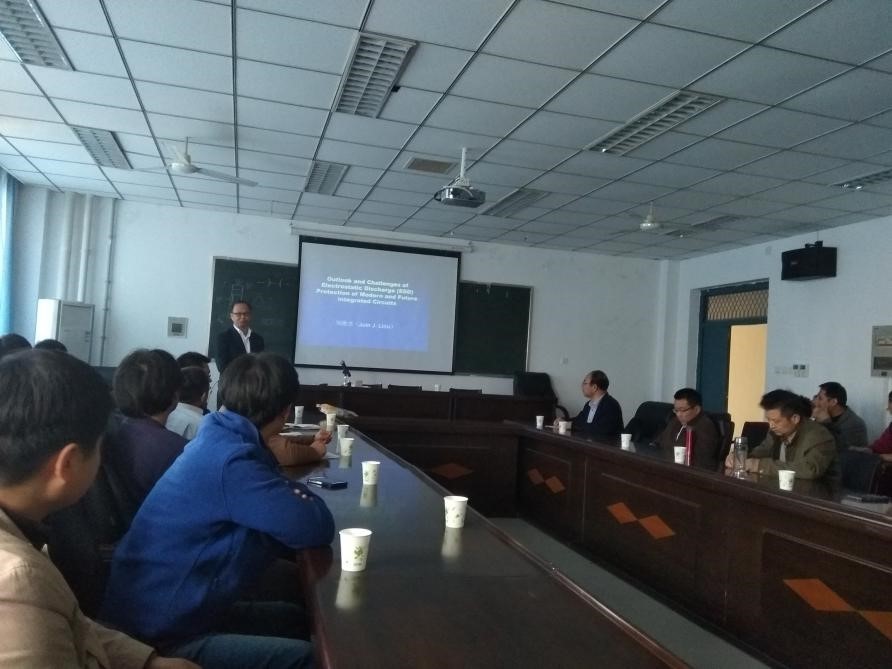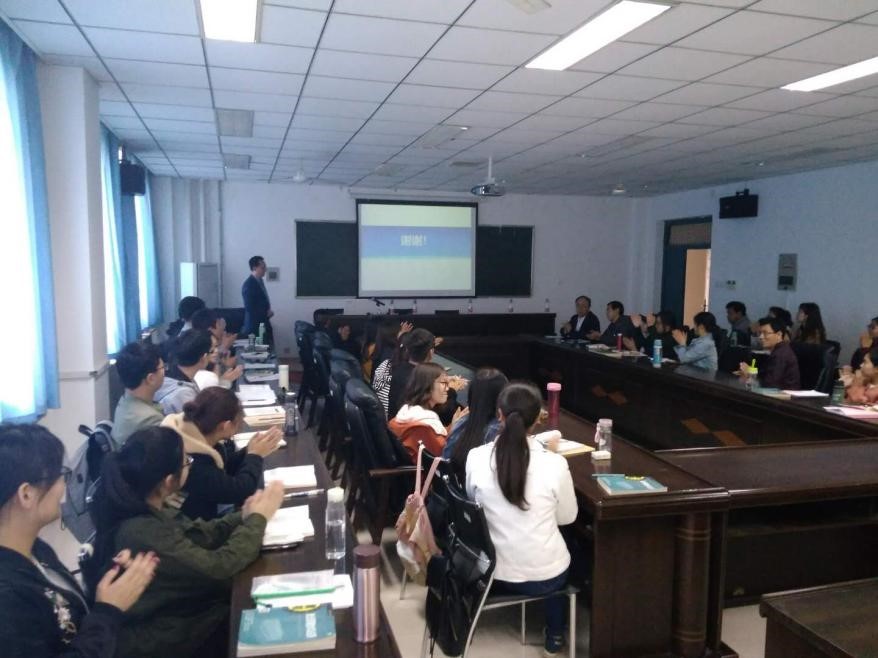On March 29th, Liu Junjie, chief professor of Zhengzhou university, gave a scientific report entitled “Outlook and Challenges of Electrostatic Discharge (ESD) Protection of Modern and Future Integrated Circuits”. On April 3rd, Li Yunsong, professor of Xidian university presented an academic lecture of “the Application of Oriented Hyperspectral Remote Sensing Image on Orbit Intelligent Collaborative Process”. Dean Gu Yuzong hosted these two meetings. Many teachers and students of School of Physics and Electronics attended these seminars.
In the first report, Professor Liu Junjie introduced the relevant knowledge of ESD source, the model, the protection scheme and the test results etc. He said, Electrostatic discharge (ESD) is one of the main threats to the reliability of electronic components. It is an event in which a finite amount of charge being transferred from one object to another. This process can produce a very high current in a very short time. More than 35 percent of chip damage can be attributed to the ESD incident. Therefore, the design of on-chip and off-chip ESD structures to protect integrated circuits from ESD damage is an important research area in the semiconductor industry. At the same time, the progress of MOS processing technology makes the failure caused by ESD more prominent. Professor Liu then introduced the design, implementation and optimization of integrated circuit ESD protection solutions in Si CMOS, Si BiCMOS, GaAs, GaN and emerging technologies. Many semiconductor companies are studying ESD protection. It is certainly predicted that ESD protection solutions will become a key element of modern and future electronic commercialization.

In the second report, Prof. Li Yunsong introduced the research background of intelligent coordination processing technology of on-orbit hyperspectral remote sensing image, and the on-orbit intelligent coordination processing of hyperspectral remote sensing image in areas of application, and analyzes the implementation difficulties of the technology, as well as the research scheme and key technology breakthroughs. Meanwhile, professor Li details the method to correct and calibrate the hyperspectral remote sensing images and how to improve spatial resolution of hyperspectral images in orbit at the same time effectively to keep the spectral information of hyperspectral images, and the ways to establish a unified hyperspectral images on-orbit intelligent processing algorithm framework, and also the designing of efficient hardware architecture and the core algorithm to adapt to the complex operation of on-orbit high-performance hardware processing platform, etc.. Finally, professor Li showed his findings to the audience in the Chang’e-1 satellite, Chang'e-2 satellite, Chang'e 3 satellite, small accompanying satellites of Shenzhou-7, the Tiangong 1 target aircraft, Tianhui-1 mapping satellite and series of successful applications of the remote sensing satellite in many major projects.

These two lectures showed the vivid images of the forefront results the corresponding technology to all of the audience, deepened the understanding of the key technical problems of the related areas, and effectively expanded the research view of the teachers and students in their academic researches.